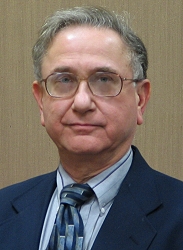It was a dark and lonely night - as your client, a middle aged man, drove along an unfamiliar country road, watching out for deer that often jump out in front of cars at that time of year. Soon after the road curved to the right he realized that a disabled car with no lights on was angled across the road in front of him. He was driving well within the speed limit, but, as you may have guessed, he couldn't stop soon enough to avoid a collision.
During his deposition, your client responds to a question by stating that he saw the car just as he was passing a driveway to a farm. He recollected that he saw a driveway just at that time and knows the driveway was there because he saw it again upon revisiting the scene.
The plaintiff claims your client had plenty of time to see the disabled vehicle and should have come to a stop without a collision. His expert uses the knowledge that perceptual reaction time for a driver is 2.5 seconds and given the sight distance from the driveway to the disabled vehicle, your client's acknowledged speed, and the braking distance for his car, your client would have had 3.5 seconds to react.
Reaction time is at the heart of many human factors analyses. The answer to the question, "What is the minimum human reaction time", is that it can be as short as about 1/5 of a second or as long as "never".
Shorter reactions times can occur when the signal and response are simpler - remember the game where you hold your hands under someone else's and then you try to slap their hands before they can pull them away? In contrast, an unfamiliar or unexpected stimulus can require a longer reaction time.
Reliable research shows that reaction time for a driver to see a signal and move from the gas pedal to the brake is around 1/2 second. That's when very little else is competing for attention and the driver knows that the signal will occur and what it looks or sounds like. Controlled on-road and driving simulator studies can satisfy those conditions.
So where does perceptual reaction time (PRT) come from? Why is it accepted to be 2.5 seconds?
Decades ago, highway designers needed to know how far ahead a driver should be able to see in order to react quickly enough to hazards. Studies of driver reaction time showed that within 2.5 seconds just about all drivers will see and react to an object placed in the road. Most drivers reacted more quickly than that. So the American Association of State Highway and Transportation Officials (AASHTO) adopted 2.5 seconds as the standard to determine how much of a curve, rise, or fall that may be built into a road. The experiments were not designed to account for night driving or the fact that headlights do not bend around a curve before the car does. Nor that a prudent driver must time-share attention to what is in front of him with looking at the mirrors and the sides of the road to watch out for those deer.
What else accounts for longer reaction times in driving? Ambiguous or unexpected hazards lengthen mental processing time, and shared attention with other critical driving tasks lengthens detection time (it takes at least a third of a second to glance in the rearview mirror). Focusing intently on some potential hazard is a situation that may produce an effect named "Inattentional Blindness". Researchers have concluded from a number of scientific studies that there is no conscious perception without attention. Inattentional Blindness explains why we fail to perceive major things that go on right in front of our eyes. In essence, Inattentional Blindness is people's inability to detect--or perhaps to remember--unexpected, unrelated, or irrelevant objects to which they are not paying attention.
Driving down the dark street, once your client focused attention and detected something in the roadway, he had to discriminate it from normal shadows and reflections seen at night, and then identify it as an obstacle.
But the mental processing isn't over yet. He must decide if there is enough time for a panic stop. If he thinks not, should he choose to swerve off the road? But it's dark and there may be additional and potentially lethal hazards there, so he slams on the brakes. All of this can easily require more than 2.5 seconds.
Perceptual reaction time may be useful for designing highways driven in the daytime, but it does not represent what may be expected of the typical driver under all driving conditions.
How much time was actually available for your client to react? The opposing expert used the statement that your client made that he saw the disabled vehicle just as he passed the driveway. Research shows that a person's memory for the order of events during stress is poor. Your client picked a landmark more likely because he remembers passing it than because he was somehow paying attention simultaneously to irrelevant features on the side of the road while analyzing his predicament straight ahead. When did he see the car? His more realistic answer should have been, "I don't know."










